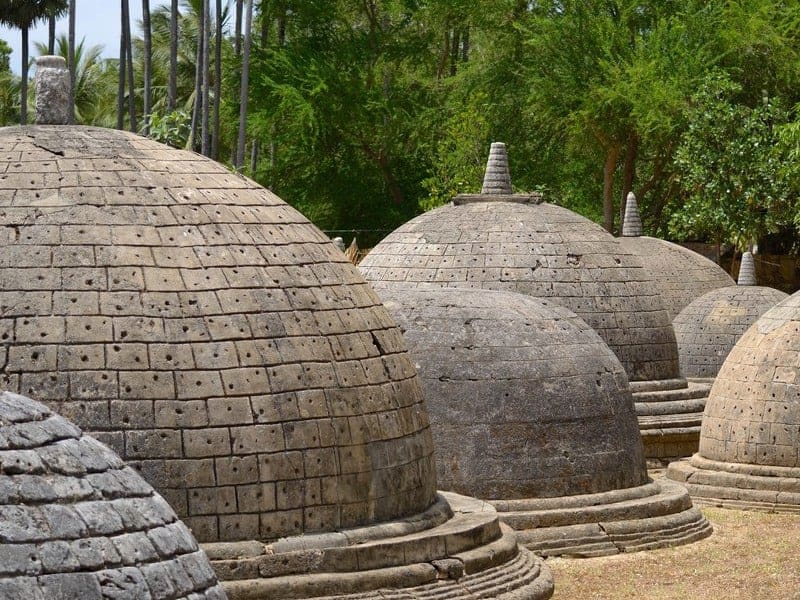Sitting out on a large, open plain ringed by little swathes of forest in the Jaffna Peninsula, the archaeological site of Kandarodai, or Kadurugoda Viharaya is important due to it having a number of tiny stupas in an otherwise Tamil and Hindu stronghold of the country. More specifically, the area is called Chunnakam or Hunugama, in Sinhala and it is among the few Buddhist sites this far north in the country. This makes it one of the more unusual places to visit in Jaffna.
The name of the place is actually most likely a corruption of the Sinhala word for military outpost, or Kandavurugoda. Over time it became Kadurugoda and the Tamil form came in later.
Indeed it is common knowledge that an incredibly affluent Brahman dynasty from Rameshwaram, the Arya Chakravartis held sway over this part of the island, ruling their own kingdom from the city of Nallur, with political ties to the powerful Vijaya Nagar kings of Tamil Nadu. However, before that, it was the province of Nagadipa, and the port of Jambukola Pattana-the current city of Jaffna and some areas around the Palk Strait-was an important port.
Also, as per the Mahavamsa the Buddha had visited the country during his lifetime, even making a stop at Nagadipa.
During much of our history, the island was united under a single flag, and was ruled from the North Central Province, either from Anuradhapura or Polonnaruwa. The seeds of true Sinhalese nationalism and unity were sown during the former era and having to rule the whole country meant ruling Jaffna too. In fact that presents an incredible situation of a large Tamil Buddhist population in the days before the influence of Hinduism on the general populace. It was also slightly predating the creation of Hinduism proper as we know it today, a collection of Vedic and pre-Vedic beliefs, Buddhist beliefs, and other folk and regional traditions combined as one religion.
The stupas at Kadurugoda Viharaya come from the Anuradhapura era. There used to be fifty-six of the little monuments dotting this plain but nowadays less than half of them remain. They are uniquely constructed, each one made of coralline stone, now petrified. Each block has a hold drilled into it in the middle and standing atop the summit of the construction is a single spire. There is no rectangular art form in between the spire and the main body of the monument. Thus the style at Kadurugoda Viharaya is one that is not seen anywhere else in the country. It is believed that these stupas hold the relics of arahat monks. These are members of the Buddhist clergy that are second only to the Buddha himself in terms of having attained enlightenment. Of them, the largest has a diameter of 23 feet, the smallest being about 6 feet around.
Written by Vasika Udurawane for Travel Lanka Compass



0 Comment